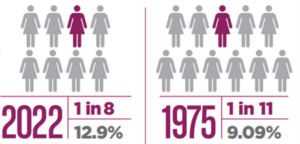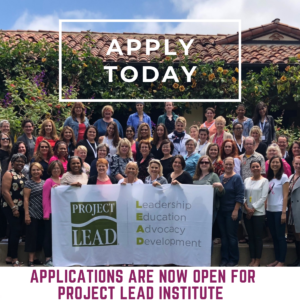Breast Cancer in 2022 – Updated Facts and Figures

In 2022, 43,250 women and 530 men will die of breast cancer in the United States. How do we know? Where does that statistic come from?
Each year the American Cancer Society releases its most current statistics for new cancer cases and deaths anticipated in the coming year. On Wednesday, January 12, 2022, the new statistics for 2022 were released. These estimates are based on an assessment of what has actually been recorded over time combined with data-driven algorithmic modeling to calculate what will happen in the current year. The most current incidence (new cases) data (through 2018) are collected by the Surveillance, Epidemiology, and End Results (SEER) program; the National Program of Cancer Registries; and the North American Association of Central Cancer Registries. Mortality data or deaths (through 2019) are collected by the National Center for Health Statistics. Notably, given this delay in the actual numbers, the projections/estimates for 2022 do not account for the impact of the COVID-19 pandemic.
What did we learn from the recent report? Breast cancer deaths are expected to decline by about 1 percent again this year which is actually not that great given that rates were declining at a much more rapid pace (~2% to 3% per year) during the 1990s and 2000s. Disturbingly, there continue to be large disparities in deaths, with black women being 41% more likely to die of breast cancer compared to white women despite their having a slightly lower incidence of breast cancer compared with white women. Black women are also more likely to be diagnosed with regional and distant-stage disease than white women, according to observed SEER incidence data between 2014-2018.
One potential glimmer of positive news is that when looking at the annual percentage change in breast cancer deaths by race and ethnicity, deaths are declining a little more rapidly for black women (~1.4% per year) relative to white women (0.9% per year). More negative news among Non-Hispanic AI/AN, the rate is actually increasing by 2.7% per year.
New cases of breast cancer (i.e., incidence) are also rising slowly by about 0.5% each year across all races and ethnicities. One might think that this finding would track with breast cancer screening rates, but in fact, current data suggest that breast cancer screening rates have slightly declined or stabilized over the past 10-15 years across all races and ethnicities, except for Hispanic women where screening rates have actually risen.
Of note, however, is that both incidence and mortality from breast cancer vary widely by state and congressional districts across the United States and are likely in part a reflection of access to health care.
One cautionary note to always keep in mind as you read the plethora of news reports and published articles that describe the current state and/or progress in the world of cancer: check the time frame over which the statistics cited pertain. For instance, you will likely have seen headlines touting that cancer deaths are down 30 percent. That sounds great, but what that actually means is that cancer mortality rates are down 30 percent over time from their all-time high time in 1991. Not over the last year. And many argue that much of that decline is related to the substantial declines in cigarette smoking over the last two decades. That is why we are concerned about the deceleration in the mortality decline for breast cancer last year (~1%) amidst all the “major progress” in cancer treatment and detection that we also read about in the news.
For more updates, see NBCC’s 2022 Facts and Figures.
Register for the 2022 NBCC Summit!

Registration and fundraising are now open for NBCC’s 2022 Advocate Leadership Summit.
NBCC’s Annual Advocate Leadership Summit provides unparalleled training and education for advocates who wish to gain the knowledge and confidence necessary to challenge science and medicine. These training sessions will help you take a leadership role in breast cancer advocacy.
We can’t wait to see you in person! Register today and stay informed through our website.
Introducing NBCC’s New Chief Advancement Officer, Mary Dulaney
Mary Dulaney joined NBCC as the Chief Advancement Officer in late December 2021. She brings with her more than 20 years of fundraising experience in healthcare and higher education. She has significant experience across all facets of development with a concentration in annual giving, major giving, and grants. She received her B.S. from West Virginia University in Journalism. You can reach her at mdulaney@stopbreastcancer.org.
Apply for Project LEAD® and Become a Research Advocate

A reminder that applications for NBCC’s 2022 Project LEAD Institute are open!
Apply now for NBCC’s premier science training program for one of two summer sessions: July 24-29, 2022 and July 31 – August 5, 2022. The first session is nearly full, so please get your applications in soon!
To learn more about the program and how to apply, please visit our website: Project LEAD Institute.
Donate Today
The National Breast Cancer Coalition’s mission is to end breast cancer. Every dollar raised is immediately put to work funding scientific research, collaborative workshops and symposia, advocacy training, and public policy work in Washington, DC, and in state capitals across the country in support of our mission.
Every minute counts in our efforts to achieve the goal of ending breast cancer. Every dollar equates to more lives saved.
Your gift is more than a contribution. It is an investment that will enable us to end breast cancer, once and for all. Donate.